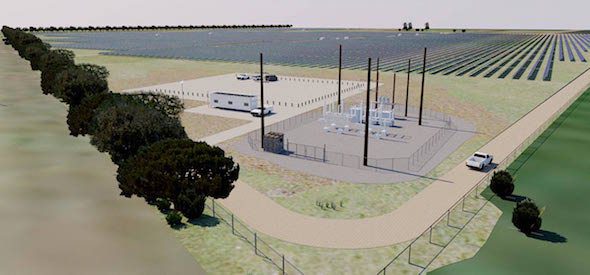Large-scale solar is rapidly gathering momentum in Australia’s Sunshine State, with another 47MW of solar farms slated for development in regional Queensland this week reaching financial close on Friday, putting them on track to begin construction.
Canadian Solar said that its ARENA-backed 15MW Longreach and 25MW Oakey solar projects had both secured finance from Australia’s Clean Energy Finance Corp, which had tipped in a total of $31.5 million via its large-scale solar financing program.

The CEFC has committed $12 million in senior debt finance to the $28.7 million Longreach Solar Farm and $19.5 million in senior debt finance to the 30MW $47.5 million Oakey Solar Farm, adding to debt finance from Bank of Tokyo-Mitsubishi UFJ and a $3.5 million grant ARENA.
And with 20-year Queensland government-backed contracts for difference locked in in March, both projects are now expected to go ahead with construction this month and be in operation in the first quarter of 2018.
So far, the CEFC large-scale solar program has committed more than $300 million to projects in three states, almost half of which has gone towards projects in Queensland, accelerating the development of more than 210MW in large-scale solar capacity in the state.
CEFC big solar lead, Gloria Chan, said solar was is an increasingly cost-effective energy solution in high lsolar irradiation areas like Longreach, in Queensland’s central west, and Oakey, which is west of Toowoomba.
“These two projects represent a significant injection into the Queensland economy, that will drive further growth, expertise and diversity in the renewable energy sector,” Chan said on Monday.
“Another important benefit is that the land owners will generate a long-term leasing income from hosting the solar panels,” she said.
Longreach and Oakey, both of qwhich will use single axis tracking technology, are expected to generate enough electricity to power the equivalent of nearly 12,000 homes.
Canadian Solar General manager Daniel Ruoss said both projects had received strong support from their local communities, which had welcomed the addition of solar to their local energy supplies.
“We expect the Longreach Solar Farm, with its 54,600 panels across 86 hectares, to generate enough solar to power around 5,000 Queensland homes,” Ruoss said. “The Oakey Solar Farm, with its 93,600 panels across 60 hectares, is expected to generate enough
power for around 7,000 homes.
Plans are underway for a 55MW expansion to the Oakey project, once the first stage is completed.
The two projects are expected to employ around 80 people during construction, with RCR O’Donnell Griffin undertaking the engineering, procurement and construction of both projects.










